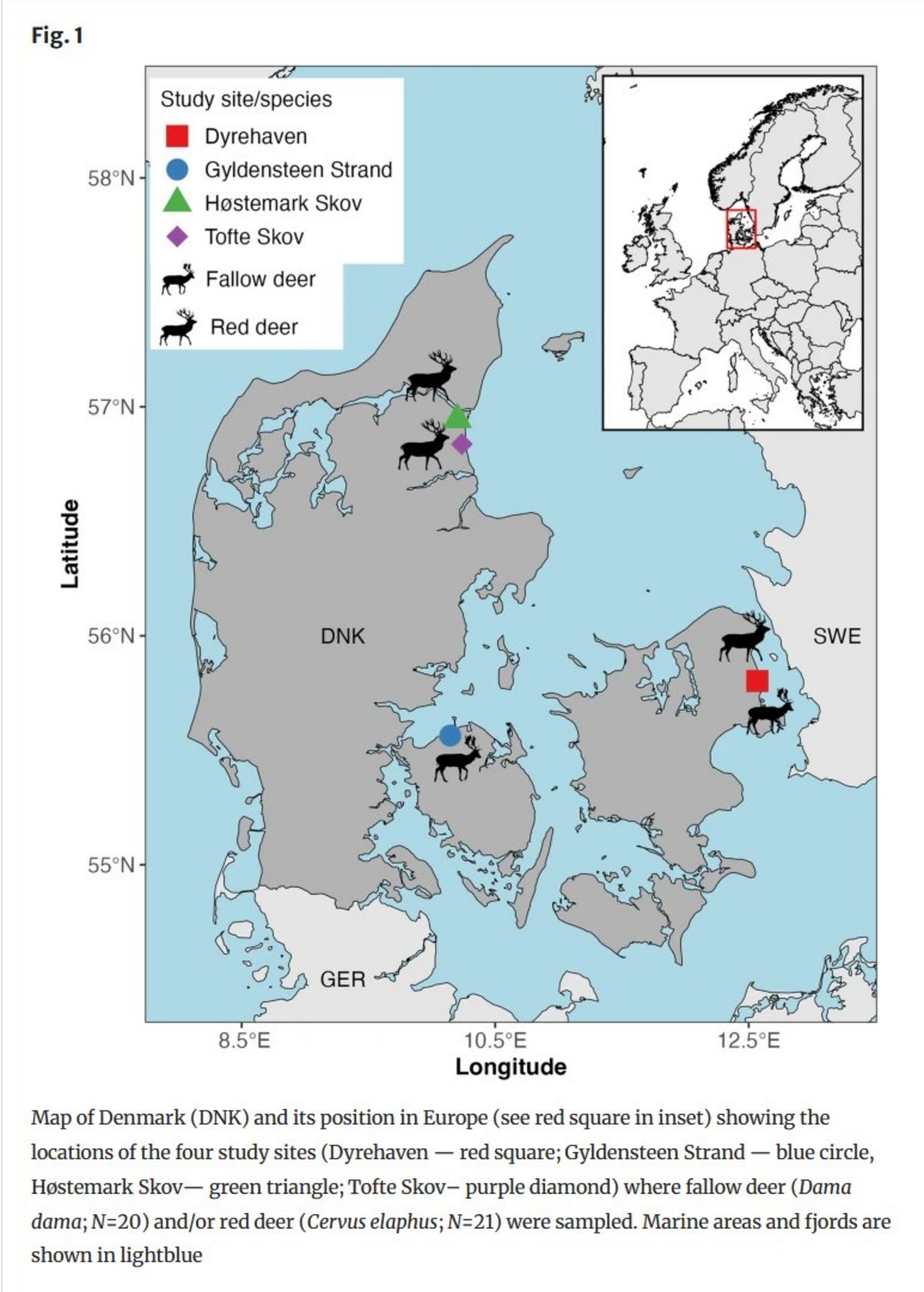Direct and Indirect Linkages Between Trace Element Status and Health Indicators - a Multi-tissue Case-Study of Two Deer Species in Denmark
New publication by Floris M. van Beest, Niels M. Schmidt, Monica Lønborg Frederiksen, Anne K.H. Krogh, Heidi H. Petersen, Sophia V. Hansson

Abstract:
Measuring trace element concentrations in tissue can be a valuable approach to monitor animal health status. Temporal variation in the absorption, transport, and storage of elements between different tissues can, however, complicate the assessment of element-health relationships. Here, we measured concentrations of selected essential (copper (Cu), zinc (Zn), selenium (Se)) and non-essential (arsenic (As), cadmium (Cd), lead (Pb)) trace elements within blood, liver, kidney, and hair of fallow deer (Dama dama; N=20) and red deer (Cervus elaphus; N=21). Using multivariate regression and structural equation models, we estimated direct and indirect linkages between tissue-specific trace element profiles and long- (body condition) and short-term (serum protein biomarkers for acute inflammation, infection, and malnutrition) health indicators. Trace element concentrations varied markedly and were weakly correlated among tissues, with the exception of Se. After accounting for sex- and site-differences in trace element concentrations, body condition of red deer was directly, and positively, associated to trace element status in liver and hair, but not in kidney. For both deer species, trace element status in blood was directly linked to serum protein status with an indirect positive association to deer body condition. For fallow deer, no direct association between trace element status and body condition was detected in any of the tissues, possibly because of elemental homeostasis, and because all individuals were in good clinical health. This study shows that hair can serve as an effective, non-invasive, biomarker in deer health assessments, yet, to fully uncover trace element-health relationships a variety of sample matrices is preferred.
